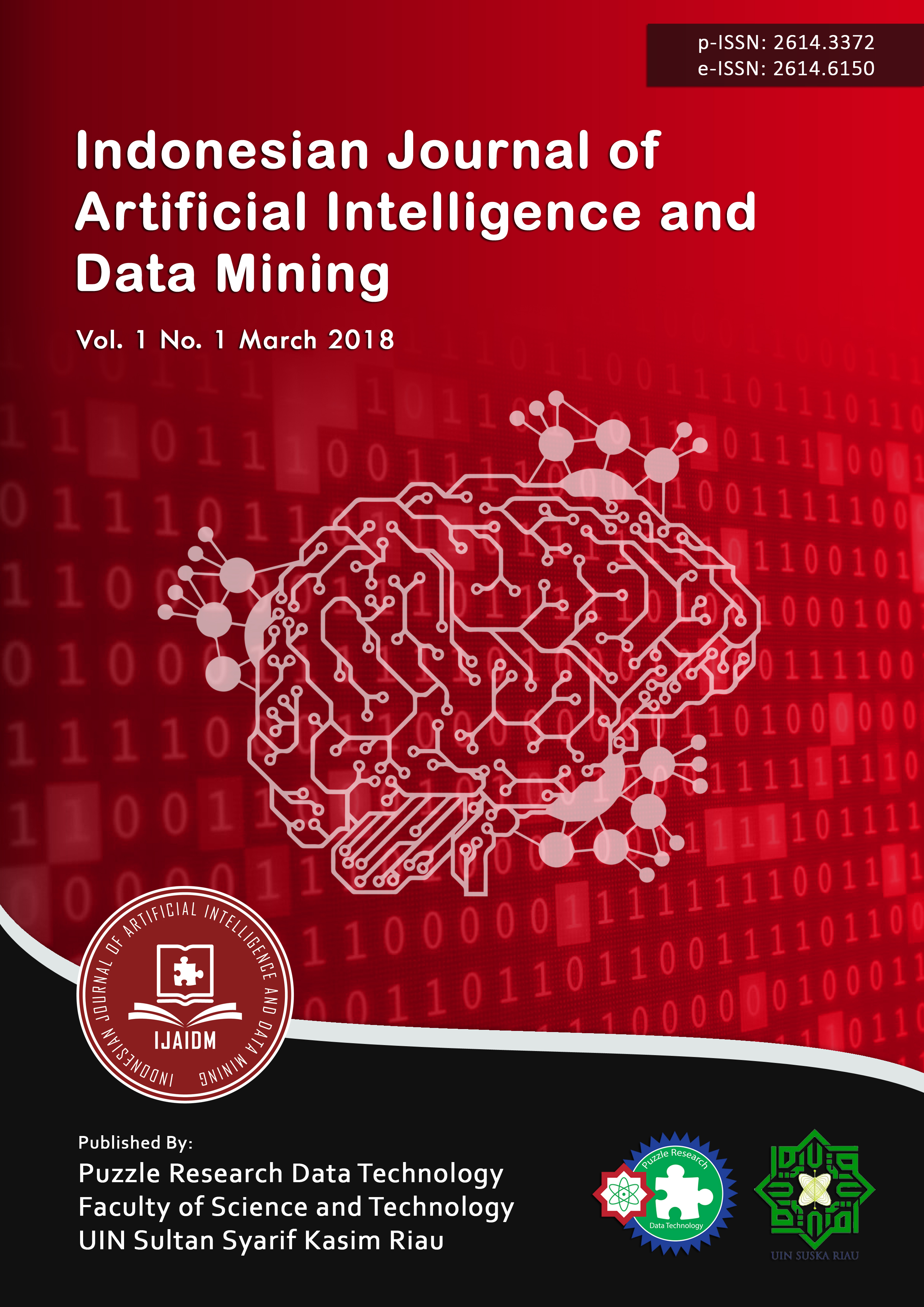Comparison Of Data Mining In E-Learning Learning Based On Log Aktivity On PSO-Based Nural Network Algorithms With PSO-Based SVM
DOI:
https://doi.org/10.24014/ijaidm.v3i2.10519Keywords:
NN-PSO & SVM PSO E-learningAbstract
The purpose of this research is to find a higher or better level of accuracy, we make a comparison between the Neural Network method based on Particle Swarm Optimization and the Particle Swarm Optimization-based support vector machine method, from evaluation on e-learning based learning systems is very important to determine the level. accuracy in learning.. In addition, the purpose of this study is to find the attributes of the highest predictive results of student learning who follow the e-learning learning system. The data we use are 641 users which are taken from the log of student learning activities from the LMS. The logs we use are Gender, Excercise, Forum, Chat, Diskusi, Upload An Assgmnt, Message, Excercise Quiz, dan Total Log. All logs will be recorded in the LMS. The data used in this study, the results of the tests we conducted, the results obtained using the PSO-based Neural Network (NN) method obtained an accuracy value of 97.35%, and the results of the AUC value were 98.60%. Then we did the second trial using the PSO-based support vectore machine (SVM) method to get an accuracy value of 88.47% and an AUC value of 93.80%. Then the conclusion is that using the neural network method is higher than using the spport vector machine method with an accuracy difference of 8.88% while the AUC accuracy value is a difference of 4.8%.
References
D. T. Larose and C. D. Larose, Discovering Knowledge in Data: An Introduction to Data Mining: Second Edition, vol. 9780470908. 2014.
A. M. Ahmed, A. Rizaner, and A. H. Ulusoy, “Using data Mining to Predict Instructor Performance,” Procedia Comput. Sci., vol. 102, no. August, pp. 137–142, 2016.
M. Jovanovic, M. Vukicevic, M. Milovanovic, and M. Minovic, “Using data mining on student behavior and cognitive style data for improving e-learning systems: A case study,” Int. J. Comput. Intell. Syst., vol. 5, no. 3, pp. 597–610, 2012.
N. Kerimbayev, J. Kultan, S. Abdykarimova, and A. Akramova, “LMS Moodle: Distance international education in cooperation of higher education institutions of different countries,” Educ. Inf. Technol., vol. 22, no. 5, pp. 2125–2139, 2017.
M. Jones and N. H. Hashim, “Activity theory: a framework for qualitative analysis,” 4th Int. Qual. Res. Conv., pp. 3–5, 2014.
M. Vásquez Astudillo, “Aplicación de modelo pedagógico Blended Learning en educación superior,” Rev. DIM Didáctica, Innovación y Multimed., no. 35, p. 1, 2017.
A. Krüger, A. Merceron, and B. Wolf, “A data model to ease analysis and mining of educational data1,” Educ. Data Min. 2010 - 3rd Int. Conf. Educ. Data Min., pp. 131–140, 2010.
E. P. Saputra and A. Hamid, “Fitur Seleksi Atribut Hasil Kelulusan Mahasiswa Elearning Berdasarkan Log Dengan Neural Network,” J. Kaji. Ilm., vol. 19, no. 1, p. 24, 2019.
M. Kaminski, “Neural network training using particle swarm optimization - A case study,” 2019 24th Int. Conf. Methods Model. Autom. Robot. MMAR 2019, pp. 115–120, 2019.
M. S. Hasibuan, L. E. Nugroho, and P. I. Santosa, “Model detecting learning styles with artificial neural network,” J. Technol. Sci. Educ., vol. 9, no. 1, pp. 85–95, 2019.
K. . M. G. Noama, A. Khalid, A. A. Muharram, and I. A. Ahmed, “Improvement of E-learning Based via Learning Management Systems (LMS) Using Artificial Neural Networks,” Asian J. Res. Comput. Sci., vol. 4, no. 1, pp. 1–9, 2019.
P. Janardhanan, L. Heena, and F. Sabika, “Effectiveness of support vector machines in medical data mining,” J. Commun. Softw. Syst., vol. 11, no. 1, pp. 25–30, 2015.
J. Djuriš, D. Medarević, M. Krstić, I. Vasiljević, I. Mašić, and S. Ibrić, “Design space approach in optimization of fluid bed granulation and tablets compression process,” Sci. World J., vol. 2012, 2012.
A. Prieto et al., “Neural networks: An overview of early research, current frameworks and new challenges,” Neurocomputing, vol. 214, pp. 242–268, 2016.
X. Liu, “Full-Text Citation Analysis : A New Method to Enhance,” J. Am. Soc. Inf. Sci. Technol., vol. 64, no. July, pp. 1852–1863, 2013.
W. Gong and W. Wang, “Application research of support vector machine in E-learning for personality,” CCIS2011 - Proc. 2011 IEEE Int. Conf. Cloud Comput. Intell. Syst., pp. 638–642, 2011.
M. Sarhani, A. El Afia, and R. Faizi, “Hybrid approach-based support vector machine for electric load forecasting incorporating feature selection,” Int. J. Big Data Intell., vol. 4, no. 3, p. 141, 2017.

